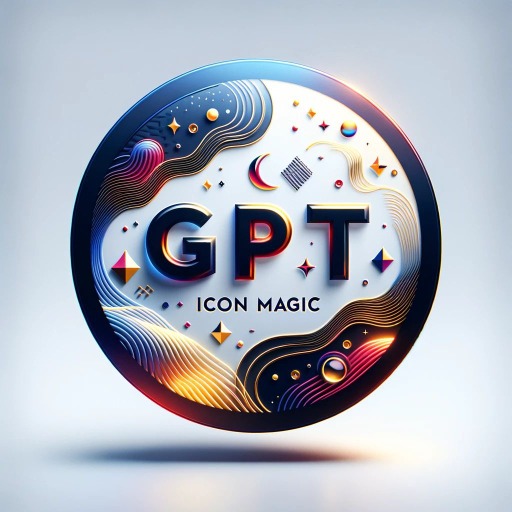🔍 VisionIdentify GPT: Image Recognition AI-advanced image recognition AI
AI-powered image identification and insights
Can you provide information about this species?
What does this sign mean?
Do you have information about this object?
What is the message this leaflet is trying to convey?
Related Tools
Load More
OCR with GPT Vision
VisionText Extractor GPT is designed to perform Optical Character Recognition (OCR) on uploaded images, extracting text with precision.

GPT Vision
I specialize in reading text directly from images, perfect for quick text extraction.

GPT Detector
ChatGPT Detector quickly finds AI writing from ChatGPT, LLMs, Bard, and GPT-4. It's easy and fast to use!

Smarter Image Analysis 👁️
Deep and powerful image analysis, returning more accurate and relevant details than standalone GPT-4 vision model

GPT Icon Magic
A seamless, inspiring Tool for creating visually appealing GPT Agent Icons, without any design expertise or complicated software switch.

Apple Vision Pro | by BePrompt
Increase Your Productivity with An expert on the upcoming Apple Vision Pro - by BePrompt
20.0 / 5 (200 votes)
Introduction to VisionIdentify GPT: Image Recognition AI
VisionIdentify GPT is an advanced artificial intelligence system designed for precise image recognition and detailed information retrieval. Utilizing cutting-edge computer vision technology, VisionIdentify GPT processes and analyzes images uploaded by users, accurately identifying the main subject and providing comprehensive information about it. The primary design purpose is to assist in educational research, digital archiving, content creation, and personal exploration by making image-based learning and discovery efficient and accessible. For example, a user can upload a picture of a historical artifact, and VisionIdentify GPT will not only identify it but also provide historical context, significance, and related data.

Main Functions of VisionIdentify GPT: Image Recognition AI
Image Analysis
Example
Processing and identifying objects in a museum artifact image.
Scenario
A museum curator uploads a photo of an ancient pottery piece. VisionIdentify GPT analyzes the image, recognizes the object as a Greek amphora, and provides detailed information about its origin, era, and use in ancient Greece.
Subject Identification
Example
Recognizing and providing information about a rare plant species.
Scenario
A botanist takes a picture of a plant during field research. VisionIdentify GPT identifies the plant as a rare species of orchid, giving details about its habitat, growth conditions, and conservation status.
Information Retrieval
Example
Delivering historical context for a landmark.
Scenario
A traveler photographs a lesser-known historical monument. VisionIdentify GPT identifies the landmark and retrieves information about its historical significance, construction period, and notable events associated with it.
Ideal Users of VisionIdentify GPT: Image Recognition AI
Educators and Researchers
Educators and researchers can benefit greatly from VisionIdentify GPT by using it to identify and gather detailed information about historical artifacts, biological specimens, or artworks. This can enhance their teaching materials, support research projects, and aid in academic publications.
Content Creators and Digital Archivists
Content creators and digital archivists can use VisionIdentify GPT to accurately identify visual elements for videos, blogs, or social media content. Additionally, archivists can categorize and describe visual materials more efficiently, making digital archives more accessible and informative.

How to Use VisionIdentify GPT: Image Recognition AI
1
Visit aichatonline.org for a free trial without login, also no need for ChatGPT Plus.
2
Upload the image you want to analyze by clicking the upload button or dragging the image file into the designated area.
3
Wait for the image to be processed by the AI. This usually takes a few seconds depending on the image size and complexity.
4
Review the identification results and detailed information provided about the main subject of the image. This includes relevant data from a vast knowledge repository.
5
Interact with the AI if you need further clarification or additional information about the identified subject. Use the feedback option to improve the AI's accuracy.
Try other advanced and practical GPTs
Humanify
AI-Powered Personal Assistant for Every Task

Getting Things Done GPT
AI-powered productivity for your tasks.

TYPO3 Dev Assist [by in2code]
AI-powered TYPO3 development and support
![TYPO3 Dev Assist [by in2code]](https://files.oaiusercontent.com/file-TNZ1d7BPN2OZdpvKDWhb9xz2?se=2124-01-05T21%3A56%3A48Z&sp=r&sv=2021-08-06&sr=b&rscc=max-age%3D1209600%2C%20immutable&rscd=attachment%3B%20filename%3D1000053217.png&sig=p0SNwoQ704sbFDuYKDrd7feDPh1aJ6zwtC80awuxzlo%3D)
Scott Galloway: A Multifaceted Mastermind
AI-powered business insights, Scott-style.

Simpson Style Transformer
AI-powered tool for creating Simpsons-style avatars.
法神
AI-Powered Chinese Legal Guidance

React Expert
AI-powered guidance for React developers.

Redesign Packager | Elevate Your Packaging Global
Elevate your packaging with AI precision

College Counselor
AI-driven insights for college success.

idea2movie (text2video) as VideoGPT
Transform Your Text into Stunning Videos with AI

Amigo GPT
AI-powered Spanish learning companion

DACHARTE X
AI-Powered EMS Reporting Made Simple

- Content Creation
- Research
- Education
- Exploration
- Archiving
Q&A about VisionIdentify GPT: Image Recognition AI
What types of images can VisionIdentify GPT analyze?
VisionIdentify GPT can analyze a wide range of images, including photos of objects, animals, plants, landmarks, artworks, and more. It accurately identifies the main subject and provides comprehensive information about it.
Is VisionIdentify GPT suitable for educational purposes?
Yes, VisionIdentify GPT is ideal for educational purposes. It helps students and researchers identify historical artifacts, biological specimens, and artworks, providing detailed insights and aiding in their academic studies.
How does VisionIdentify GPT handle user privacy?
VisionIdentify GPT is designed with a strong emphasis on user privacy. It ensures that all uploaded images are handled securely and that user data is not shared with third parties. Ethical considerations are paramount in its design.
Can VisionIdentify GPT support multiple languages?
Yes, VisionIdentify GPT offers multilingual support, making it accessible to a global audience. Users can interact with the AI and receive information in various languages, enhancing its usability across different regions.
What are some common use cases for VisionIdentify GPT?
Common use cases for VisionIdentify GPT include educational research, digital archiving, content creation, and personal exploration. It assists users in identifying and learning about various subjects through detailed image analysis and information retrieval.